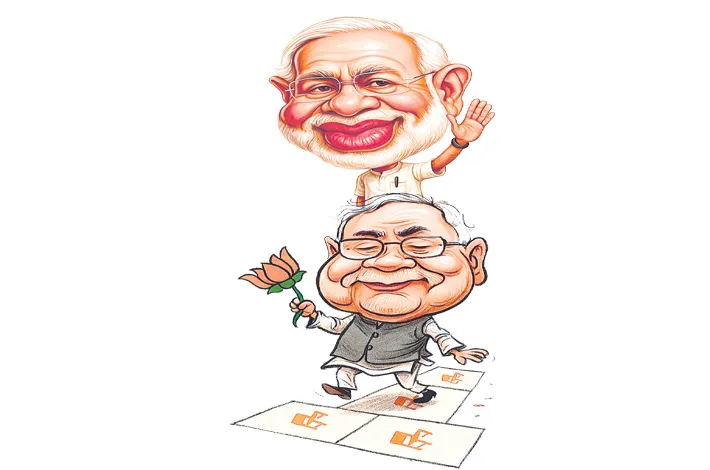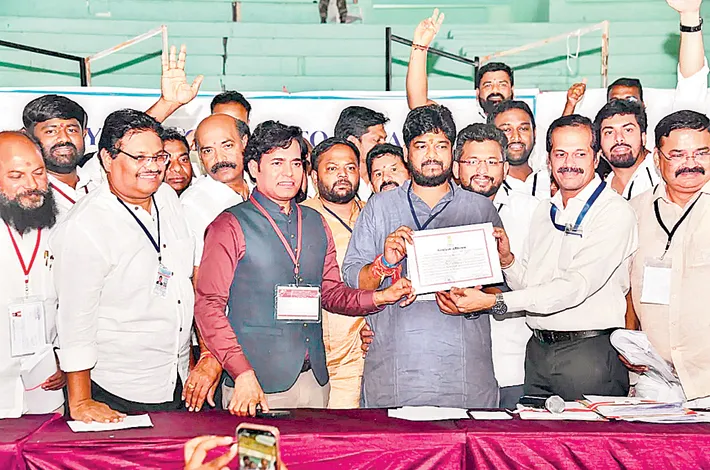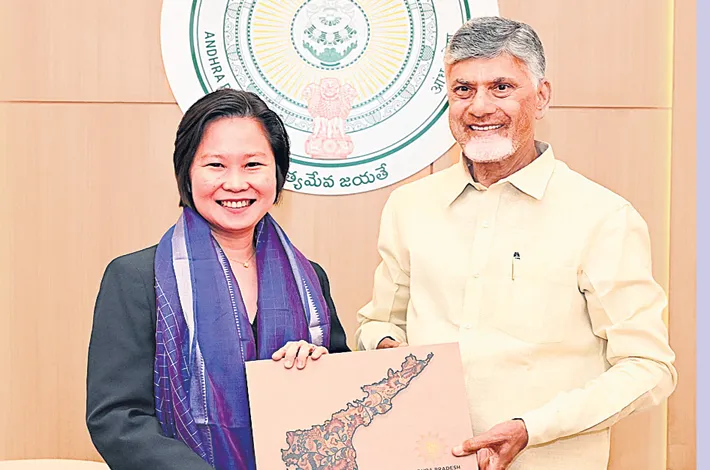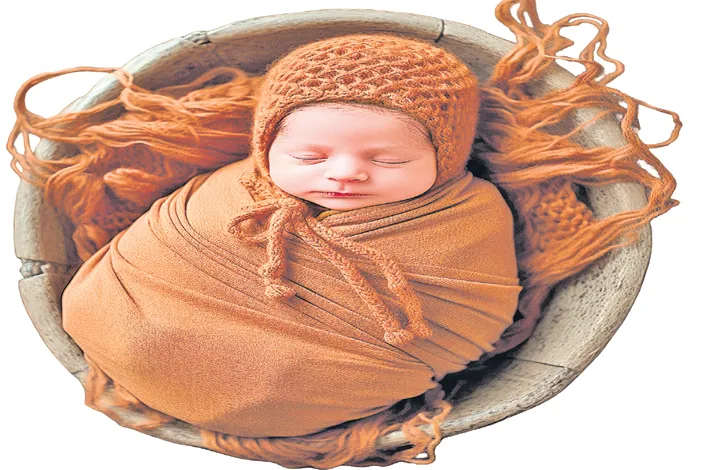Jai Srimanarayana vs Jai Sriram
10-07-2025 12:00:00 AM
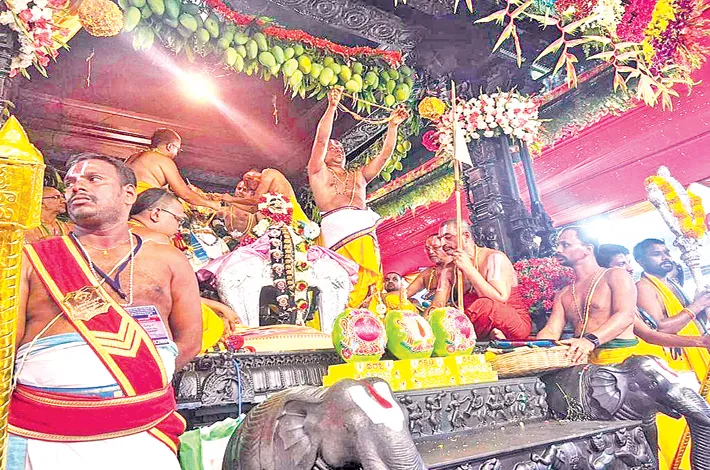
■ The debate gained traction around 20 years ago when Adhrvaveda scholar Gudimalla Krishnamacharyulu, in his book Bhadradri Kshetra Manjari, referred to the deity as Srimanarayana
■ Vaishnava priests’ reluctance to utter "Rama" due to its perceived association with "Chandra" (moon), a symbol linked to Lord Shiva, given the historical tensions between Vaishnavism and Shaivism
■ In 2012 and 2013 when priests consistently used "Ramanarayana Varaya" during the Kalyanam, and by 2018, this practice had become routine
metro india news I Bhadrachalam
The Sree Seetha Ramachandra Swamy Temple in Bhadrachalam, Telangana, revered as "Dakshina Ayodhya," is a cornerstone of Hindu devotion, particularly for followers of Lord Rama. This 17th-century temple, constructed by the legendary Bhakti saint Kancharla Gopanna, popularly known as Bhakta Ramadasu, has long been a site of spiritual and cultural significance.
However, a contentious debate over the temple's rituals, specifically the divine marriage ceremony (Sita Rama Kalyanam) and the invocation of Gotra Namas (ancestral lineage), has sparked a heated controversy. The issue revolves around whether the deity should be addressed as "Sriram" or "Srimanarayana," with allegations of historical distortion and accusations of promoting a particular ideological agenda.
Origins of the Controversy
The Bhadrachalam temple is dedicated to Lord Rama, an incarnation of Vishnu, with the central icon depicting the four-armed Vaikuntha Rama alongside Sita and Lakshmana. According to the temple's Sthalapurana, Lord Narayana manifested as Rama to fulfill the prayers of Bhadra, a devoted sage, on the banks of the Godavari River. This dual identity—Rama as a human incarnation and Narayana as the supreme deity—forms the theological backdrop of the controversy. The dispute centers on the recitation of the Pravara and Gotra during the annual Sita Rama Kalyanam, a grand ritual celebrating the divine marriage of Rama and Sita, held on Rama Navami.
Traditionally, the Gotra of Lord Rama is cited as Vasishta, with the Pravara (ancestral lineage) recited as Nabhaga, Ajha, and Dasaratha, reflecting his Kshatriya lineage from the Ikshvaku dynasty. Sita’s Gotra is cited as Gautama, with her Pravara as Swarnaroma, Hasvaroma, and Janakula. However, since at least 2012, temple priests have invoked the deity as "Ramanarayana Varaya" instead of "Sri Ramachandra Varaya," assigning the Gotra of Achyuta to the bridegroom (Rama) and Soubhagya to Sita. This shift has been interpreted by some as equating the divine couple with Lakshmi Narayana (Vishnu and Lakshmi) rather than Rama and Sita, prompting accusations of deviating from the temple’s historical and cultural traditions.
Historical and Theological Context
The controversy is not merely linguistic but deeply tied to theological and cultural identities. The Bhadrachalam temple follows Vaishnava traditions, specifically influenced by the Pancharatra Agama, as introduced by Bhakta Ramadasu, who invited families from Srirangam to ensure adherence to these rituals. Historically, Bhakta Ramadasu referred to the deity as "Dasharathi" or "Kodanda Rama" in his devotional compositions, never as "Ramanarayana." Critics argue that invoking Ramanarayana and altering the Gotras to Achyuta and Soubhagya reframes Rama and Sita as Brahmin deities, undermining their Kshatriya lineage as depicted in the Ramayana.
The debate gained traction around 20 years ago when Adhrvaveda scholar Gudimalla Krishnamacharyulu, in his book Bhadradri Kshetra Manjari, referred to the deity as Srimanarayana. This sparked outrage among Vedic scholars and priests who viewed it as a distortion of the temple’s Rama-centric identity. The issue escalated in 2012 and 2013 when priests consistently used "Ramanarayana Varaya" during the Kalyanam, and by 2018, this practice had become routine. Some attribute this shift to Vaishnava priests’ reluctance to utter "Rama" due to its perceived association with "Chandra" (moon), a symbol linked to Lord Shiva, given the historical tensions between Vaishnavism and Shaivism.
Allegations and Public Reaction
The Bhadrachalam Region Protection Committee, led by Busireddy Shankar Reddy, and other Ram Bhakti groups have accused temple authorities of twisting historical facts to align with a broader Vaishnava narrative, potentially influenced by ideological agendas. They argue that this shift dilutes the temple’s unique identity as a Rama shrine and disrespects the legacy of Bhakta Ramadasu. Protests, including rallies and sit-in dharnas, have been organized to demand a return to traditional recitations. However, these agitations have faced resistance, with the Endowments Department reportedly booking cases against protestors rather than addressing their concerns.
Critics also point to the broader socio-political context, alleging that the controversy is entangled with efforts to promote Hindutva, which emphasizes Rama as a unifying figure for Hindu identity. The phrase "Jai Sriram" has been a rallying cry for Hindutva movements, and some see the shift to "Jai Srimanarayana" as an attempt to reframe the temple’s identity in a way that aligns with Vaishnava orthodoxy rather than the populist Ram Bhakti movement.
Legal and Administrative Response
The matter has reached the courts, with a petition filed by GVT Mainder seeking resolution. The court appointed a five-member committee to consult stakeholders, including priests, scholars, and devotees, and submit a report. The committee has completed its consultations and submitted its findings, though the details remain undisclosed as the case is sub judice. Bhadrachalam temple’s Executive Officer, L. Ramadevi, has refrained from commenting extensively, citing the ongoing legal proceedings.
The Endowments Department, which manages the temple, has been criticized for its inaction. Despite representations from groups like the Bhadrachalam Region Protection Committee, no significant remedial measures have been implemented. Vedic scholar Annadanam Chidambara Sastry, in his book Bhadradreesunaku Jaruguthunna Ghorapacharalu, has accused the authorities of allowing rituals to deviate, exacerbating tensions between Vaishnava and Shaiva traditions.
Implications and Broader Significance
The Bhadrachalam controversy reflects broader tensions within Hinduism, particularly between sectarian identities and the push for a unified Hindu narrative under Hindutva. The debate over Gotra Namas and the deity’s nomenclature is not merely ritualistic but symbolic of how religious traditions are negotiated in modern India. The temple’s historical significance, tied to Bhakta Ramadasu’s devotion and the Ramayana’s cultural legacy, makes this dispute particularly sensitive.
The lack of historical evidence supporting the Ramanarayana invocation, as noted by scholars, underscores the need for transparency and dialogue. The temple’s administration must balance tradition with inclusivity, ensuring that devotees’ sentiments are respected without fueling sectarian divides. The court’s final ruling and the Endowments Department’s response will likely set a precedent for how such disputes are resolved in other temples. All one can expect is the Divine intervention, till then is is Jai Sriram!





